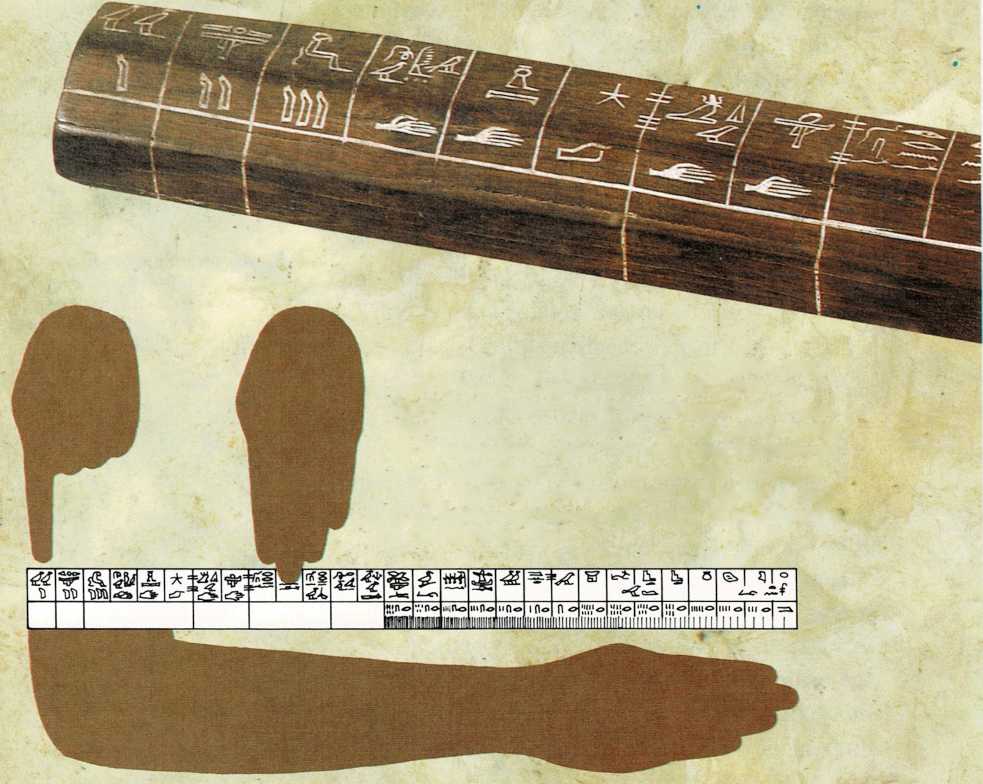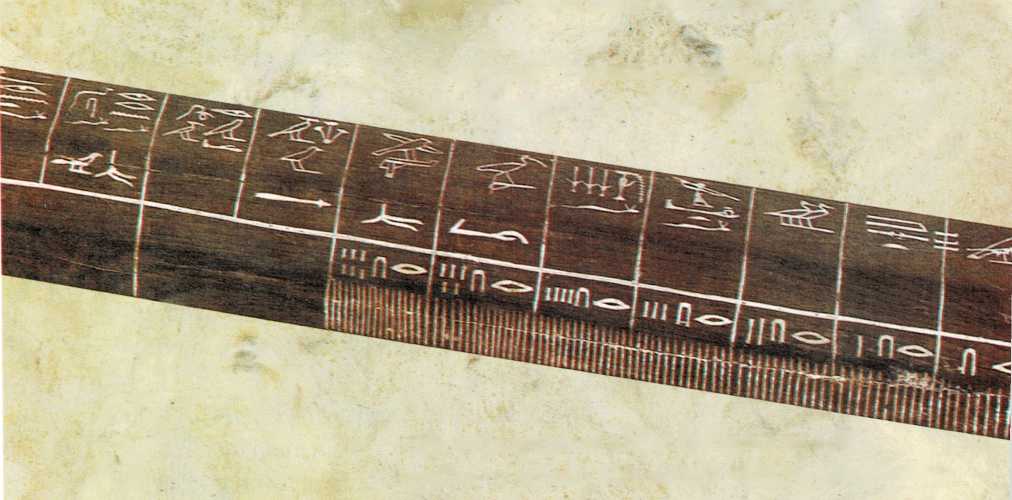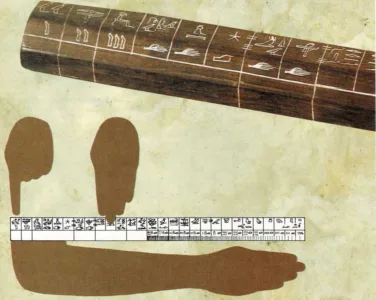Making things even
There was one trouble with the way people first measured things with
their arms, hands, and feet. Some people have longer arms, bigger feet,
and wider hands than others. If you and your father each used your feet
to measure two boards to be cut five feet long, your father’s board
would be longer than yours just-because his feet are bigger.
People soon realized that a measurement, such as the foot, had to be the
same all the time. In other words, they had to have standard units of
measurement. Then, one person’s unit

Above is a picture of part of a real Egyptian cubit stick that is
3,500 years old. The cubit was the Egyptian standard of length, and
was as long as a man’s forearm—the distance from the elbow to the
tip of the longest finger. The cubit was divided into small units,
called digits, that were the width of a finger. Four digits made a
larger unit called a palm. Thus there were twenty-eight digits or
seven palms in the Egyptian cubit.
of length, weight, or whatever would be the same as that used by
everyone else.
The ancient Egyptians may have been the first people to use standard
measurements for length and weight. For example, they had a unit of
length called a cubit. To get this length, they measured someone’s
arm—probably that of the pharaoh—from the elbow to the tip of the
middle finger. Then they made a bar of black granite that was exactly
this length.
This bar was the official cubit. All other cubit sticks had to be
exactly the same length, which was about twenty-one inches (53
centimeters). From then on, if a worker anywhere in Egypt was measuring
something in cubits, he would not use his own arm—he would use a cubit
stick, just as we use a ruler, a yardstick, or a meter stick.
Nearly six thousand years ago, the Egyptians had a standard unit of
weight called a beqa.
One beqa weighed about the same as 256 grains of wheat. The actual
weights were made of cut and polished stone. The smallest weight found
is equal to Ar beqa, ^or\ 16^ grains of wheat.
Today, all the different units of measurement that we use are based on
certain standards. And the stories behind some of these standards are
often funny, as you’ll see.


